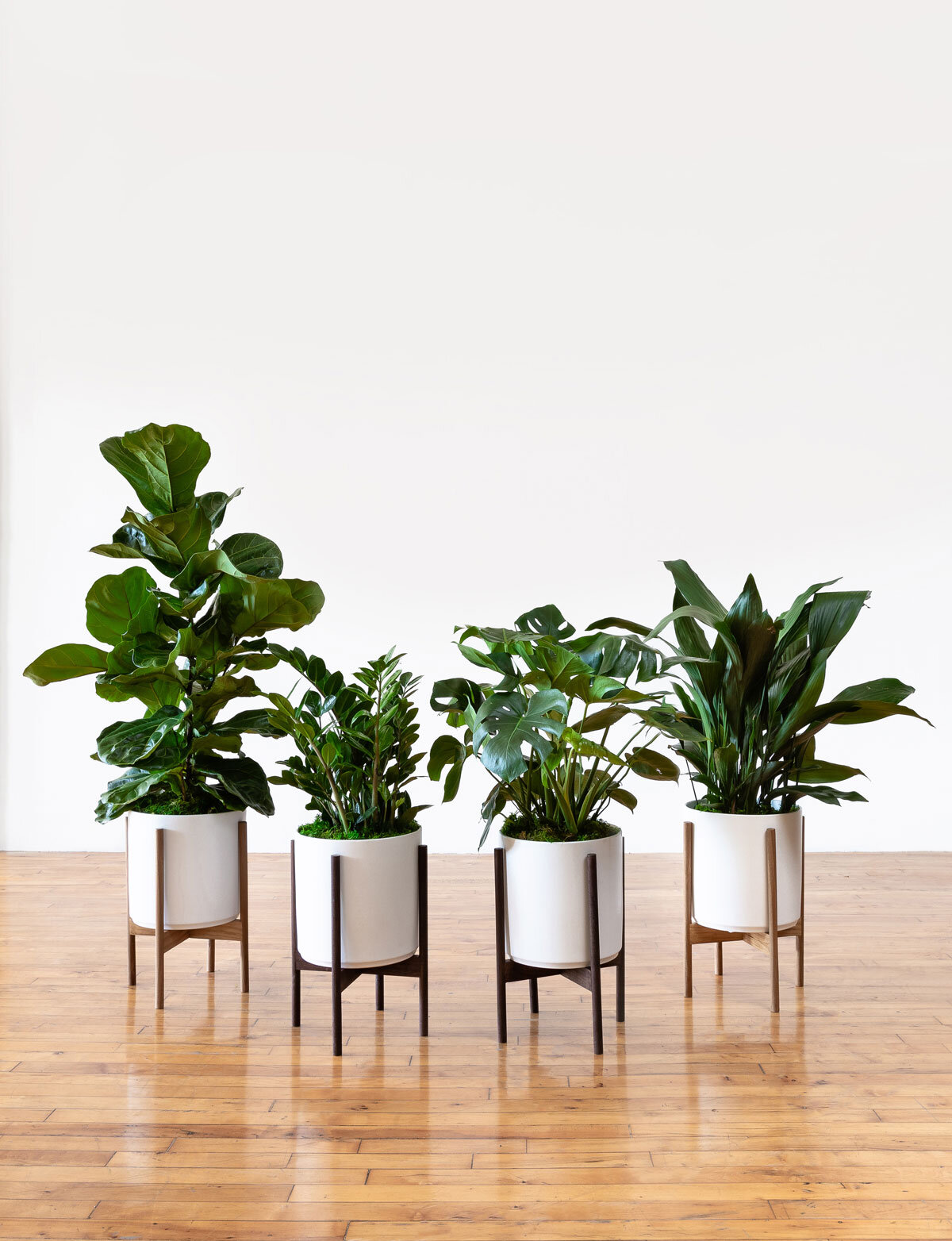Fact or Fiction: Do Houseplants Go Dormant in Winter?
The Snake Plant and Jade Pothos, basking in winter light. Photo by @thenamestesa
With the change of seasons, it's natural to wonder how your beloved houseplants are faring in the winter months. There are many myths and misconceptions about house plants going dormant during winter, and it's time to debunk any myths!
Dormancy in Winter
While many outdoor plants and trees shed their leaves and go dormant in winter, most common houseplants don't follow the same pattern. Houseplants come from a variety of climates, and many, including many from our collection at Leon & George, are native to tropical regions where winter is just a slightly cooler and drier season. While kept indoors, these conditions are generally kept pretty constant as well, except for shorter days in winter. So, unless your houseplant is specifically adapted to a dormant period, it's likely to keep growing year-round, though it is not uncommon for houseplants to grow much more slowly during the winter months than they do during spring and summer.
Do Plants Need Less Care in the Winter?
While most houseplants may not go dormant, their growth may slow down during the winter. This can sometimes be mistaken for dormancy, but in reality, your plant is just conserving energy since there is less daylight this time of year. This reduced growth means they require less water and fertilizer, but it doesn't mean you can forget about them. Houseplants still need regular attention and care throughout the year. Consider reducing your watering frequency and amount, and definitely reduce fertilizer use– in fact, most fertilizers are too strong to use during the winter, but our natural plant food is gentle enough to use all year round (just reduce to once per month in the winter!).
Repotting in Winter
In general, it's best to avoid repotting your houseplants during the winter months. Repotting can stress the plant, and during the winter, they are already dealing with lower light levels and potentially cooler temperatures. Wait until the growing season in spring to give your houseplants a fresh start, and only repot if absolutely necessary, for example, your plant has been overwatered and is experiencing root rot.
Temperatures in Winter
While many common houseplants can often tolerate slightly cooler temperatures in winter, most generally prefer to be kept in a stable, warm environment. Most common houseplants come from tropical regions where temperatures remain relatively constant year-round. Sudden drops in temperature can stress your plants, so try to keep your home in the same temperature range throughout the year.
Light Conditions in Winter
While some houseplants may require less light during the winter due to their slowed growth, many still need their usual requirements, in some cases plenty of bright, indirect light. Make sure to place your plants near windows where they can receive enough light to keep them happy. If you live in an area with long, dark winters, you might consider supplementing with grow lights to keep your plants thriving, or at the very least, moving your plants around throughout the day to give them the light they need.
The idea that houseplants universally go dormant in winter is more fiction than fact. It's crucial to understand your specific plant's needs and provide the right care year-round. While your plants might not be as active during the winter, they still rely on you for proper care and attention to remain happy and thrive!
Designed to Thrive
Premium plants, potted and delivered, plus lifetime access to 24/7 Plant Doctor support.

